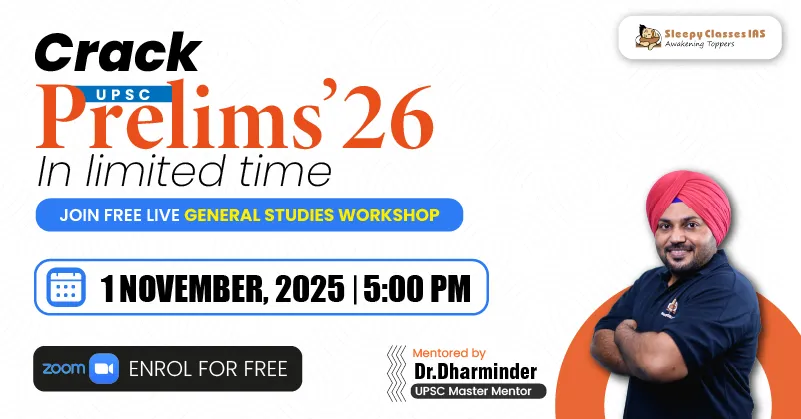Question
Q33. Which one of the following is a work attributed to playwright Bhasa ?
- Kavyalankara
- Natyashastra
- Madhyama-vyayoga
- Mahabhashya
Answer: 3
Detailed Explanation
Key points:
· Kavyalankara (Sanskrit: काव्यालङ्कार, Kāvyālaṅkāra) which translates to “The ornaments of poetry,“ is an important work in Sanskrit poetics by Bhamaha (c. 7th century).
· The Natyashastra (Sanskrit: नाट्यशास्त्र) is a foundational text in Indian performing arts, encompassing theatre, dance, and music. Traditionally attributed to the sage Bharata Muni, it is believed to have been composed between 200 BCE and 200 CE.
The most notable commentary on it is by Abhinavagupta, known as Abhinavabharati, which further elaborates on its principles.
· The Mahābhāṣya (महाभाष्य), meaning “Great Commentary,” is a seminal work attributed to the ancient Indian grammarian Patañjali, composed in the 2nd century BCE. It serves as a commentary on selected rules from Pāṇini’s Aṣṭādhyāyī, a foundational text of Sanskrit grammar, and incorporates insights from Kātyāyana’s Vārttika, which elaborates on Pāṇini’s rules.
·
· Madhyama Vyayoga, based on an episode from the Mahabharat, Bhasa’s play deals with the encounter between Ghatothkach and a family of a Brahmin – father, mother and three sons – passing through a dense forest.
· Ghatothkach is in search of a human as food for his mother, Hidimba to break her fast. He wants one of the male members of the Brahmin family to offer himself for this purpose. As the eldest son is close to the father and the youngest is dear to the mother, the middle son – Madhyam – offers himself for the food of Hidimba. With the permission of Ghatothkach, Madhyam goes to a nearby river to bathe before his death, but he takes a long time to return. Ghatothkach shouts, “Oh Madhyama – the middle one! Oh middle one!” Soon Bhim, the second son of Kunti and Pandu, appears on the scene. The Brahmin’s middle son is spared. After fierce contest of prowess between Bhim and Ghatothkach, Bhim voluntarily surrenders to him to become the food for Hidimba. On reaching, Hidimba and Bhima recognise one another. She tells Ghatothkach that Bhim is his father. Bhasa’s play ends with the happy reunion of son, mother and father.
Additional Information – Bhasa, who predates Kalidasa, is one of the earliest and most celebrated Indian playwrights in Sanskrit. He was born in the 3rd century CE. His plays generally describe events between the 4th century BCE to the 4th century.
Important works by Bhasa –
Bhasa-nataka chakram :
· Pratima-natakam and Abhisheka-natakam are based on Ramayana episodes.
· Balacharitam, describes Krishna’s birth and childhood based on Harivamsa in Vishnu Purana.
· Karnabharam, Duta Vakyam, Duta Ghatotkacham, Madhyamavyayogham, Pancharatra, Urubhangam—all based on Mahabharata episodes.
· Charudatta and Avimarakam are semi-social dramas with original plots.
· Pratijna-yaugandharayanam and Svapnavasavadattam describe incidents from King Udayana’s life.
Additional Information –
· Svapnavasavadattam (स्वप्नवासवदत्तम्), meaning “The Dream of Vasavadatta,” is a Sanskrit play written by Bhāsa. It consists of six acts and is based on the romantic narratives surrounding King Udayana of Kaushambi and Vasavadatta, the daughter of Pradyota, the ruler of Avanti.



